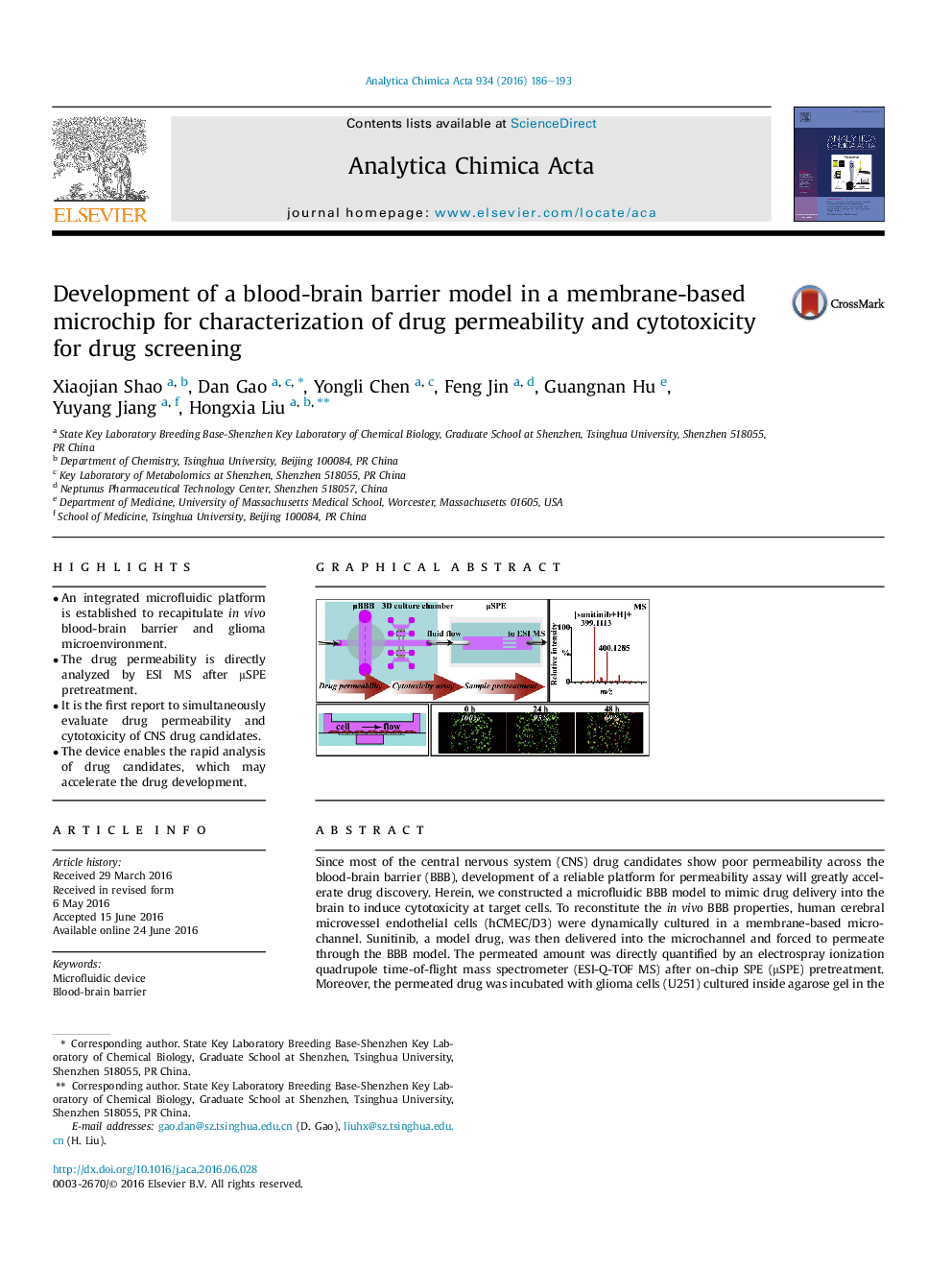| Article ID | Journal | Published Year | Pages | File Type |
|---|---|---|---|---|
| 1162744 | Analytica Chimica Acta | 2016 | 8 Pages |
•An integrated microfluidic platform is established to recapitulate in vivo blood-brain barrier and glioma microenvironment.•The drug permeability is directly analyzed by ESI MS after μSPE pretreatment.•It is the first report to simultaneously evaluate drug permeability and cytotoxicity of CNS drug candidates.•The device enables the rapid analysis of drug candidates, which may accelerate the drug development.
Since most of the central nervous system (CNS) drug candidates show poor permeability across the blood-brain barrier (BBB), development of a reliable platform for permeability assay will greatly accelerate drug discovery. Herein, we constructed a microfluidic BBB model to mimic drug delivery into the brain to induce cytotoxicity at target cells. To reconstitute the in vivo BBB properties, human cerebral microvessel endothelial cells (hCMEC/D3) were dynamically cultured in a membrane-based microchannel. Sunitinib, a model drug, was then delivered into the microchannel and forced to permeate through the BBB model. The permeated amount was directly quantified by an electrospray ionization quadrupole time-of-flight mass spectrometer (ESI-Q-TOF MS) after on-chip SPE (μSPE) pretreatment. Moreover, the permeated drug was incubated with glioma cells (U251) cultured inside agarose gel in the downstream to investigate drug-induced cytotoxicity. The resultant permeability of sunitinib was highly correlated with literature reported value, and it only required 30 min and 5 μL of sample solution for each permeation experiment. Moreover, after 48 h of treatment, the survival rate of U251 cells cultured in 3D scaffolds was nearly 6% higher than that in 2D, which was in accordance with the previously reported results. These results demonstrate that this platform provides a valid tool for drug permeability and cytotoxicity assays which have great value for the research and development of CNS drugs.
Graphical abstractA microfluidic blood-brain barrier model was developed to evaluate drug permeability using MS detection and assess antitumor activity for central nervous system drug screening.Figure optionsDownload full-size imageDownload as PowerPoint slide
